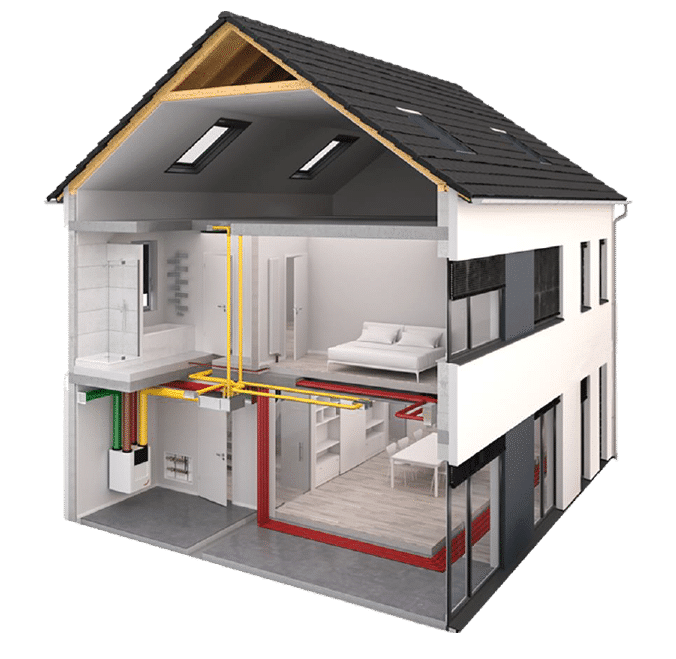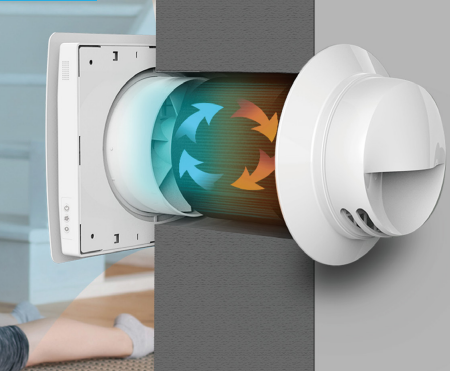How HRV Ensures a Cleaner Indoor Living Environment
The All-Inclusive Overview to the Uses of Heat Recovery Ventilation in Modern Buildings
Heat Recovery Ventilation (HRV) systems stand for a significant improvement in constructing technology (HRV Heat Recovery Ventilation). They give a method for exchanging stale interior air with fresh outside air while decreasing power loss. This method not just improves indoor air top quality however likewise adds to energy efficiency in both domestic and commercial buildings. Recognizing the various applications and advantages of HRV can expose its important duty in modern style and sustainability efforts. The ramifications of this innovation deserve exploring additionally
Understanding Heat Recovery Ventilation Solutions

Numerous contemporary buildings focus on energy performance, comprehending heat recuperation air flow (HRV) systems is vital for optimizing interior air quality and lowering energy usage. HRV systems work by transferring warm from stale interior air to incoming fresh air, efficiently maintaining comfy interior temperatures while reducing power loss. These systems include a warmth exchanger, fans, and ductwork that assist in the flow of air. During winter season, HRV systems record and recycle warm from the outgoing air, while in summer, they can aid cool down incoming air. By continually trading air, HRV systems additionally lower humidity and the concentration of indoor toxins. Appropriate installation and maintenance of HRV systems are essential for their efficiency and performance in enhancing overall building performance and comfort.
Advantages of Heat Recovery Ventilation
Heat recovery ventilation systems use many benefits that improve both power performance and indoor air top quality in modern buildings. By capturing and recycling power from exhaust air, these systems significantly decrease cooling and heating prices, resulting in lower energy consumption. In addition, they keep a stable flow of fresh exterior air, lessening the danger of interior air toxins and allergens. This constant exchange helps control moisture degrees, protecting against mold and mildew development and making sure a much healthier living atmosphere. In addition, HRV systems add to sustainability objectives by decreasing general carbon impacts. Their ability to optimize air flow without giving up thermal comfort makes them a beneficial enhancement to modern building layout, promoting both financial and ecological benefits.
Applications of HRV in Residential Structures
As home owners significantly prioritize energy efficiency and interior air top quality, the applications of heat healing ventilation (HRV) systems in domestic structures have ended up being more prevalent. HRV systems are particularly beneficial in tightly sealed homes, where keeping fresh air circulation is crucial for preventing dampness accumulation and indoor contaminants. They successfully transfer warmth from outbound stagnant air to inbound fresh air, decreasing energy expenses related to heating & cooling. In addition, HRVs can improve comfort levels by regulating humidity and temperature. They are also versatile for various residential designs, consisting of single-family homes and multi-unit buildings. In general, integrating HRV systems supports sustainable living methods while guaranteeing a healthier interior setting for owners.
HRV in Business and Industrial Settings
In commercial and industrial setups, the implementation of heat recuperation air flow (HRV) systems has come to be progressively essential for optimizing power performance and keeping air top quality. These systems effectively transfer warm from exhaust air to incoming fresh air, reducing the requirement for additional home heating or cooling. This not only reduces power expenses yet likewise contributes to sustainability directory campaigns. Industries such as production, warehousing, and workplace buildings profit substantially from HRV systems, as they assist manage temperature and moisture levels, making certain a comfortable and effective atmosphere. HRV systems help in eliminating contaminants and excess wetness, boosting indoor air quality. As policies around air top quality end up being more stringent, the fostering of HRV innovation is likely to grow, making it an essential element of modern commercial and commercial framework.
Future Patterns in Heat Recovery Ventilation Modern Technology

Regularly Asked Inquiries
Just How Does Heat Recovery Ventilation Effect Indoor Air Quality?
Heat recovery ventilation greatly enhances interior air high quality by constantly exchanging stagnant indoor air with fresh outside air while recovering power. This process lowers contaminants, keeps ideal moisture degrees, and ensures a healthier atmosphere for occupants.
Can HRV Solutions Be Set Up in Existing Structures?
HRV systems can certainly be set up in existing structures. Retrofitting might call for alterations click for more to ductwork and ventilation designs, but it considerably enhances power effectiveness and indoor air high quality, making it a viable alternative for older structures.
What Maintenance Is Required for HRV Systems?

Exist Details Climates Where HRV Is Much More Efficient?
Heat recovery ventilation systems are especially efficient in environments with substantial temperature differences in between periods. These systems enhance power effectiveness by recouping heat from exhaust air, making them excellent for both cold and moderately cozy atmospheres.
Exactly How Do HRV Equipments Affect Energy Costs?
